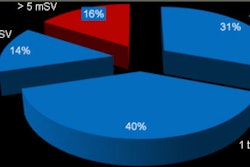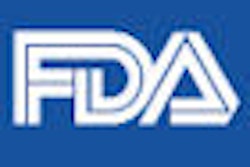Monday, November 28 | 10:40 a.m.-10:50 a.m. | SSC12-02 | Room N226
In patients with glioblastoma, the MRI contrast agent gadobutrol provides "significant tumor enhancement" in early postcontrast imaging, but gadofosveset offers significantly greater diagnostic information and lesion enhancement after six hours.Those conclusions come from researchers at the Hospital Universitari de Girona and Girona Biomedical Research Institute in Spain, who compared gadofosveset (Ablavar, Lantheus Medical Imaging) and gadobutrol (Gadavist, Bayer HealthCare Pharmaceuticals).
The study used a 1.5-tesla MRI system and enrolled 28 consecutive patients (10 women; mean age, 64 years) with histologically proven glioblastoma. Readers had a preference for gadofosveset at six hours in 20 patients (71%). The presence of lesions in more than one area was seen in six cases (21%), as gadofosveset at six hours detected additional lesions.
The researchers found a significant preference for gadobutrol for all qualitative results, contrast-to-noise ratio, and contrast enhancement compared with gadofosveset at five minutes. Overall, the highest signal-to-noise ratio and contrast-to-noise ratio values were found six hours after gadofosveset injection. The highest contrast enhancement was seen with gadobutrol, followed by gadofosveset at six hours.
"We think that gadofosveset promises two major clinical benefits: increased tumor enhancement enabling better diagnostic information for high-grade gliomas, such as more accurate delineation of tumor margins, extension, morphology, and multifocality for better planning for resection and radiation treatment," said presenter Dr. Josep Puig Alcantara, from the hospital's department of radiology. "And, doses can be reduced without diminishing scan quality."
Alcantara and colleagues plan to continue their research, given the promising future of blood pool contrast imaging.
"As a surrogate marker for treatment outcome, blood pool contrast agents could play a central role in the development of new angiogenesis inhibitors," he added. "The ability of MR techniques using blood pool contrast agents to reveal changes in tumor microvascularity is likely to accelerate the development, testing, and monitoring of new antiangiogenic drugs. Further studies will be needed to validate the full utility of MR imaging using blood pool contrast agents in the diagnosis and follow-up of brain tumors."



.fFmgij6Hin.png?auto=compress%2Cformat&fit=crop&h=100&q=70&w=100)




.fFmgij6Hin.png?auto=compress%2Cformat&fit=crop&h=167&q=70&w=250)











